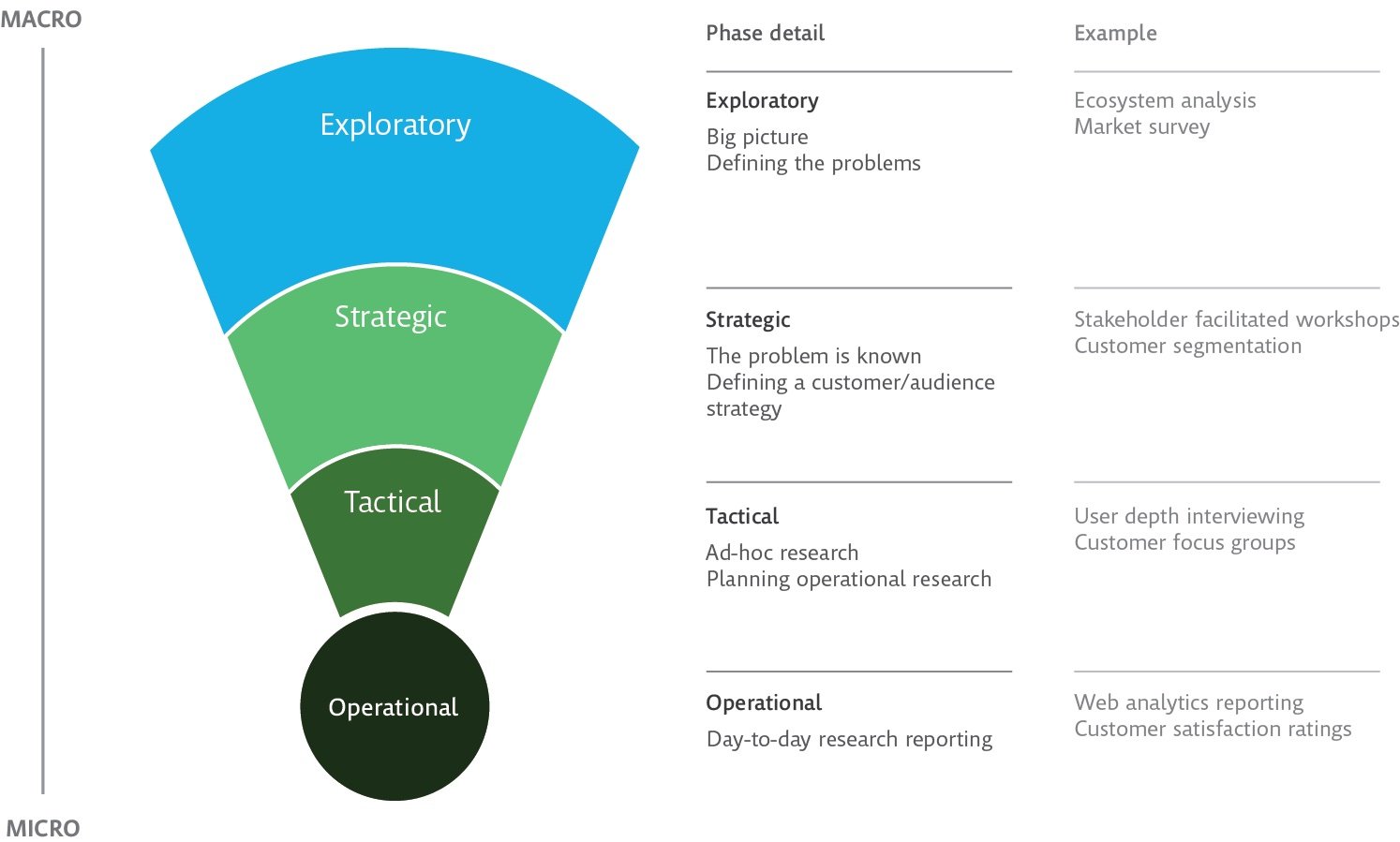Ideas through insights
It’s possible to use research and the resulting insights you glean at any stage in a project/product life cycle. This post will focus on one way to use research insights in the exploratory phase of a project/product life cycle.
Let’s remind ourselves what our Research Funnel looks like:
Research Funnel
Before you begin a new project, a good way of quickly absorbing all the existing knowledge that there maybe about a theme, product type or website is to literally surround yourself with it. This is especially relevant for new ideas or product development. Create an ‘incident room’ if you can: fill the walls of your meeting room, the walls near your desk, or even just use a pinboard or online pinboard if space is tight or you’re working with a dispersed team. The same process can be used throughout a project’s or product life cycle — read about how MailChimp has applied this idea.
Let’s take a new product idea as an example. Say you wanted to develop a new responsive tool for web designers but you weren’t sure what aspect of responsive design to focus on. First of all, you should pose a hypothesis or problem statement to gather ideas around. For example: “How to speed up a designer’s responsive workflow.” You would then need to gather insights around this topic. You could run some interviews with freelance designers about how they work responsively. You could shadow a development team for the day to understand their processes. You could observe conversations on Twitter or IRC or wherever your target audience interact to see what people talk about. You could search out industry data and articles currently available.
The next stage is to comb through this data and extract insights from it. You can use good old Post-it notes and a sharpie: capture one insight or thought per Post-it. If one insight leads into another, use two Post-its. The objective is volume. Try to ensure clarity in each Post-it so you don’t have to go back and reference material again (maybe you could use a key if you think it’ll get confusing).
After this, stick them all up and synthesise the same way you would for any kind of cluster or affinity sort. Organise into broad themes. These themes then become springboards for further exploration and idea generation. You might see a gap or opportunity in one particular area, both from a workflow perspective but also from a business perspective. Bingo. Your insights then become the fuel for ideas generation.
This method doesn’t just have to be used for new products — it works particularly well in a discovery phase for new projects or for new features in an existing product.
Further reading:
Sticky Wisdom by Dave Allan, Matt Kingdon, Kris Murrin, Daz Rudkin
The Science of Serendipity by Matt Kingdon
The Art of Innovation by Tom Kelley

